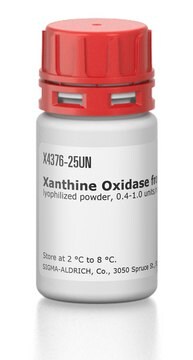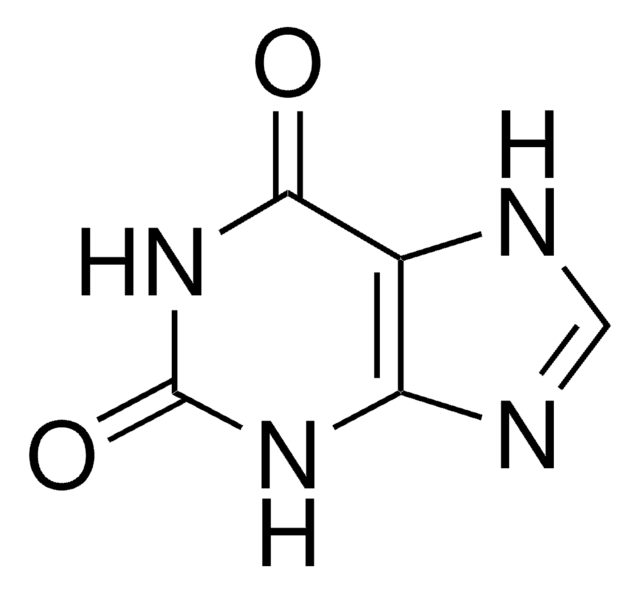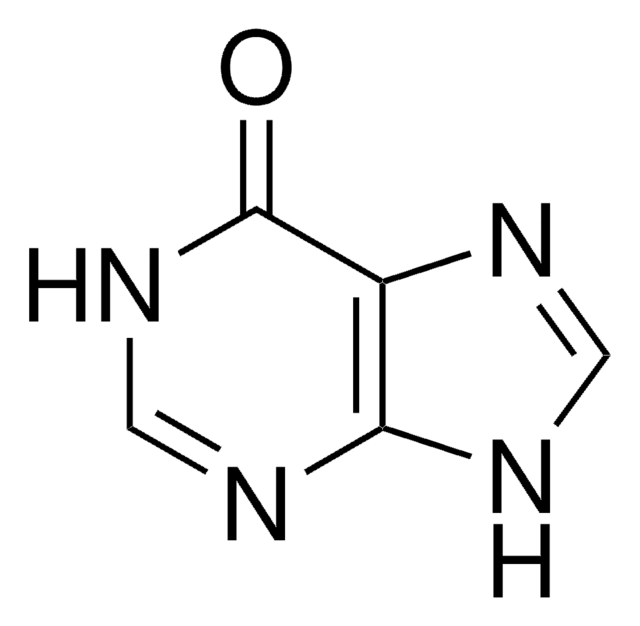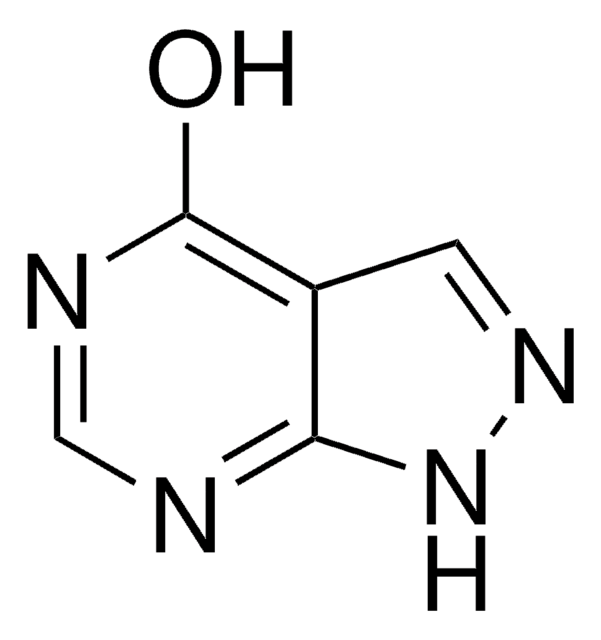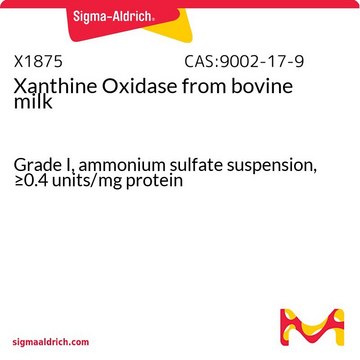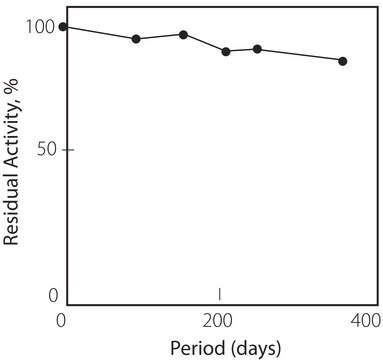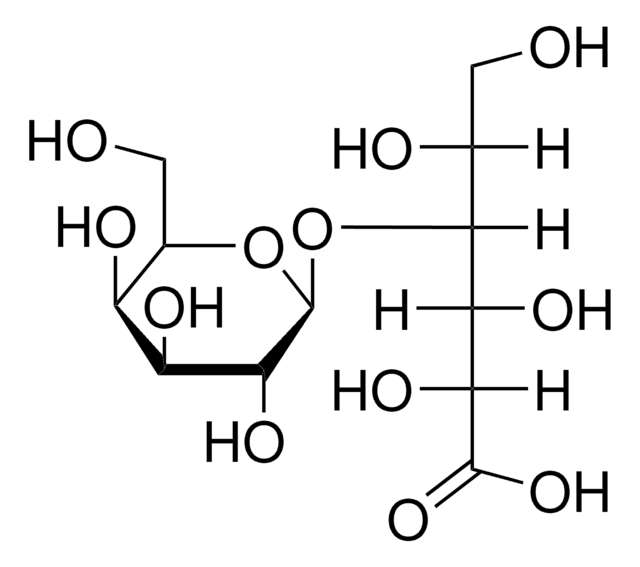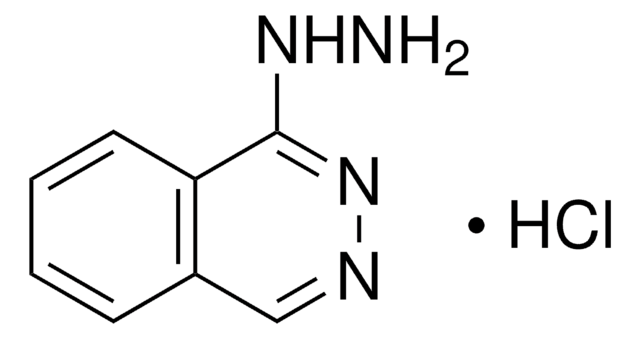A8003
Allopurinol
xanthine oxidase inhibitor
Sinónimos:
1H-Pyrazolo(3,4-d)pyrimidin-4-ol, 4-Hydroxypyrazolo(3,4-d)pyrimidine, 4-Hydroxypyrazolo[3,4-d]pyrimidine, HPP
About This Item
Productos recomendados
biological source
synthetic (organic)
Quality Level
assay
≥99% (TLC)
form
powder
mp
>300 °C (lit.)
solubility
1 M NaOH: soluble 50 mg/mL, clear to very slightly hazy, colorless to faintly yellow
storage temp.
room temp
SMILES string
O=C1NC=Nc2[nH]ncc12
InChI
1S/C5H4N4O/c10-5-3-1-8-9-4(3)6-2-7-5/h1-2H,(H2,6,7,8,9,10)
InChI key
OFCNXPDARWKPPY-UHFFFAOYSA-N
Gene Information
human ... XDH(7498)
¿Está buscando productos similares? Visita Guía de comparación de productos
Application
- to decrease the uric acid levels and study its effect on renal injury and inflammation in mice
- as a xanthine oxidase inhibitor to test panton-valentine leukocidin (PVL) neutrophil extracellular traps (NETosis) dependence on different enzymes, channels, or organelles using human polymorphonuclear cells (hPMNs)
- as a reference standard to study the inhibitory effect of olive leaf components on xanthine oxidase in vitro
- intravenous injection in mice for inhibition of xanthine oxidase
- use as an inhibitor of xanthine oxidase
- use as a positive control in xanthine oxidase inhibition assay
- use in the preparation of University of Wisconsin solution for osmotic stabilization to enhance the density differences between islets and acinar fragments during porcine islet purification
Biochem/physiol Actions
signalword
Danger
hcodes
Hazard Classifications
Acute Tox. 3 Oral - Skin Sens. 1
Storage Class
6.1C - Combustible acute toxic Cat.3 / toxic compounds or compounds which causing chronic effects
wgk_germany
WGK 2
flash_point_f
Not applicable
flash_point_c
Not applicable
ppe
Eyeshields, Faceshields, Gloves, type P2 (EN 143) respirator cartridges
Certificados de análisis (COA)
Busque Certificados de análisis (COA) introduciendo el número de lote del producto. Los números de lote se encuentran en la etiqueta del producto después de las palabras «Lot» o «Batch»
¿Ya tiene este producto?
Encuentre la documentación para los productos que ha comprado recientemente en la Biblioteca de documentos.
Los clientes también vieron
Nuestro equipo de científicos tiene experiencia en todas las áreas de investigación: Ciencias de la vida, Ciencia de los materiales, Síntesis química, Cromatografía, Analítica y muchas otras.
Póngase en contacto con el Servicio técnico